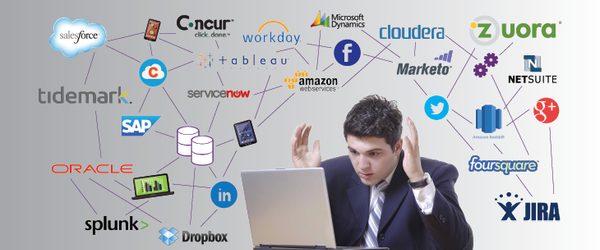-
About
- About Listly
- Community & Support
- Howto
- Chrome Extension
- Bookmarklet
- WordPress Plugin
- Listly Premium
- Privacy
- Terms
- DMCA Copyright
- © 2010-2025 Boomy Labs


 Darren Cunningham
Darren Cunningham
Listly by Darren Cunningham
Here are 5 signs it might be time to re-think your cloud services integration strategy.

Your old on-premises tools can’t keep up with the world of social, mobile, analytics and cloud (SMAC). Legacy middleware technologies were conceptualized and built in the 1990s and were not designed to handle an IT ecosystem that expands beyond traditional confines of the firewall. Either built for moving large data sets in scheduled batches (ETL) or moving small volumes of data in real-time (EAI), neither technology is well-suited for this new world for unstructured information. Learn more here.

You have multiple tools and teams for different styles of integration (application, process, data), not to mention hand-coding. The world of integration has been converging in the on-premises world for years. In the cloud world, it’s on the fast track. As we noted in this iPaaS announcement, Gartner had this to say about next-generation integration in their PaaS hype cycle:
“Compelling iPaaS value propositions for user organizations include the financial benefits (operating expenditures vs. capital expenditures) that are typical of cloud services, faster time to integration and greater ease of use compared with traditional integration middleware and the set of cohesive and integrated capabilities that were previously found in multiple discrete integration products.”

All APIs are not created equally and having an open API does not mean easy on-going maintenance and integration. There’s no doubt that APIs are everywhere but one does not superannuate the other. In fact, in his Forbes review of our Spring 2014 release, Ben Kepes writes about the convergence of API management and integration noting: “All in all it’s an interesting release for the company and gives us a glimpse of what the future looks like for the broader integration space.” You can learn more about the API management features in the SnapLogic Integration Cloud Spring 2014 here.

Are you logging into multiple applications and spreadsheets to get a single view of customers and employees? Yes, it’s an old problem, but it simply hasn’t gone away. Cloud single sign on (SSO) solution providers like OneLogin and Okta do a great job allowing people to log in once, but if you’re a sales rep, for example, you want to go to one place to see all relevant customer activity including social media, support tickets and order history. This requires real-time integration. And when it comes to cloud analytics, you want to be able to dynamically assemble data from multiple sources to get relevant information and insight. This requires that “citizen integrators” can serve themselves. It requires broad cloud services and on-premises connectivity and it requires powerful data integration capabilities. Learn more about our Snaps here .

Does it seem that the more SaaS apps you deploy, the less adoption and ROI you’re getting? Silo’d SaaS inevitably leads to “SaaS Sprawl.” As summarized in this Cloud Computing Experts Forecast post, IDC predicts that, “over the 2013 to 2017 forecast period, public IT cloud services will have a compound annual growth rate [CAGR] of 23.5%, five times that of the IT industry as a whole and PaaS will lead IaaS and SaaS with a CAGR of 29.7%.” Clearly the demand for SaaS and PaaS is on the rise. It just makes sense. But the right approach to cloud services integration is the key to unlocking the transformative potential of these investments.
